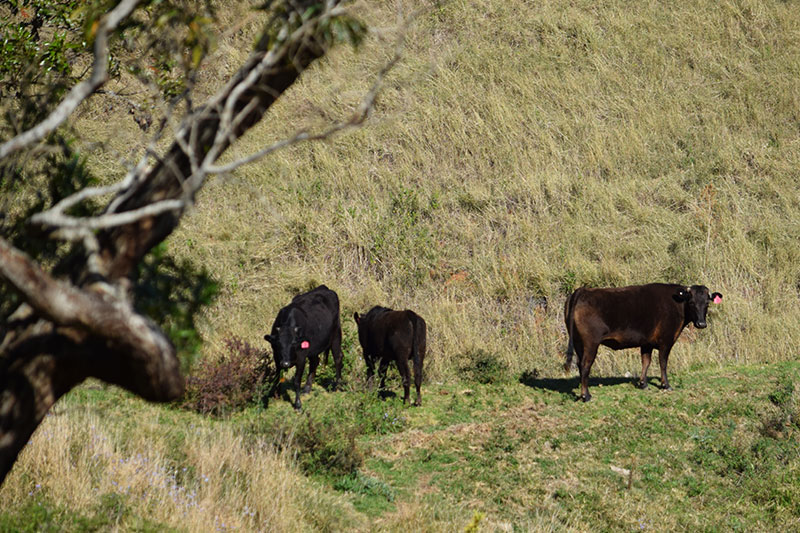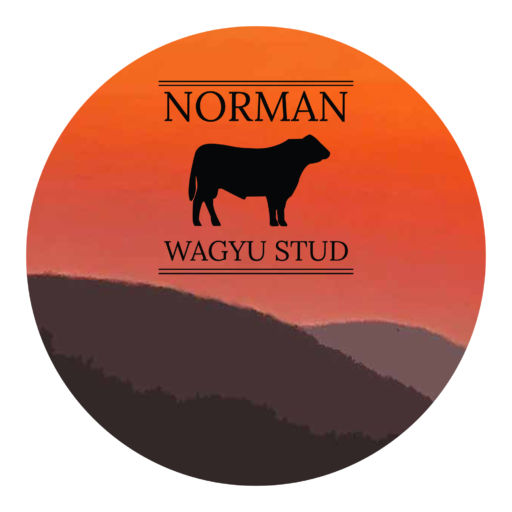Norman Wagyu Stud
History of Wagyu

The Wagyu breed has modest origins in Japan. Japanese native Mishima cattle were raised for labour for about 2,000 years, and the selection pressure for draught capabilities favoured animals with more intra-muscular fat, known as marbling. Due to their high value as draught animals, there was a ban on eating Mishima meat for much of the breeds history.
Lifting of the ban on eating meat in Japan commenced during the Meij Restoration which started in 1867. At this time a decision was made to increase Mishima body size and milk production by crossbreeding. In 1868 Shorthorn and Devon were initially imported and used. Subsequently, there was crossbreeding with breeds such as Brown Swiss, Angus, Simmental, Holstein, Ayrshire and Hanwoo Korean. Altogether about 2,600 head from British and Continental breeds were introduced and crossed with the native cattle until the breed was closed to outside genetic infusions in 1910. In 1919, the government introduced the registration of Japanese cattle and the term ‘Wagyu’ was created.
There are four (4) strains of Wagyu – Japanese Black, Japanese Brown (red), Japanese Shorthorn and Japanese Polled. Only the Japanese Black and Japanese Brown (Kumamoto line) are available outside Japan.
Wagyu In Australia
Australia received its first Wagyu genetics in 1990, and frozen semen and embryos have been available here since 1991.
In 1997, the first five full-blood Japanese cattle were introduced to Australia. In 1999, a further 40 females and nine bulls were flown to Australia, some from the original Japanese born, others were full-bloods born on American soil.
The dominant strains of Wagyu in Australia are the black bloodlines of Tajima, Shimane (Fujiyoshi) and Tottori (Kedaka). These bloodlines make up 90% of the national Japanese herd with the remaining 10% being the red bloodlines of Kochi and Kumamoto.
1. Tajima
Tajima Wagyu are characterised by smaller frames with high marbling qualities. Originating in the Hyogo Prefecture of Japan, the cows have lower milking, and the growth rates tend to be lower than other strains. But these deficits are small compared to the exceptional marbling advantage. Michifuku is a famous Tajima sire and forms part of the genetic basis of Norman Wagyu.
2. Shimane
Originating in the Shimane Prefecture of Japan, this strain is characterised by well-balanced qualities including good growth, fertility and milking rates. Dai 7 Itozakura is probably the most famous of the Shimane line. He was an outstanding sire with high marbling capabilities and excellent growth rates. His female offspring are excellent milkers.
3. Tottori
Originated in the Tottori Prefecture of Japan, just east of Hyogo Prefecture this strain is characterized by larger framed cattle with good growth rates, good milk supply and overall balance. The famous Tottori bull Kedaka was born in 1959 and is considered to be one of the outstanding sires in this Tottori strain.
4. Kochi & Kumamoto (Red Wagyu)
Originating in the Kumamoto Plateau in Kyushu Japan, these strains were strongly influenced by the Hanwoo Korean breed and European Limousin breed. These animals are characterized by their red colour with large frame size and good milk supply. These strains still produce marbling however are generally not as highly marbled as the black strains such as Tajima.
In the late 1990’s Japan declared “Wagyu” to be a living treasure and banned any further exportation of bloodlines. This was reinforced in 2002 due to the outbreak of Mad Cow disease & Foot and Mouth disease confirming no further exportation of Wagyu genetics (embryos, semen or live animals) out of Japan.
